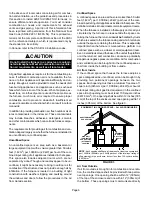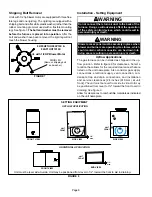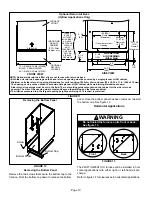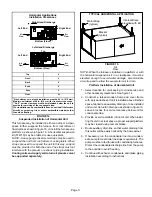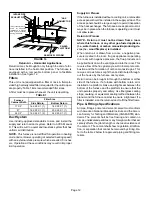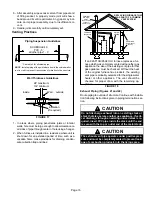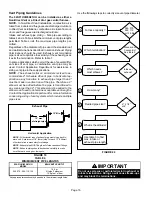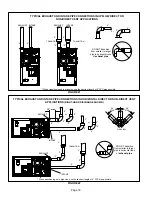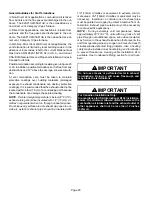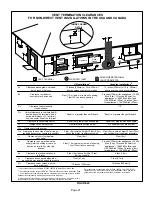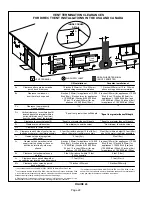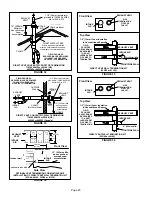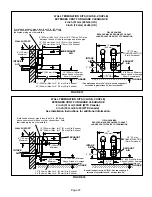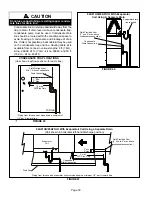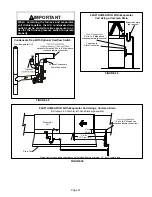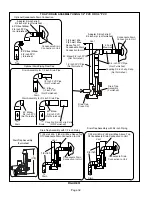
Page 19
Intake Piping
The 92AF1UH/95AF1UH furnace may be installed in ei-
ther
direct vent
or
non−direct vent
applications. In non−
direct vent applications, when intake air will be drawn into
the furnace from the surrounding space, the indoor air
quality must be considered and guidelines listed in Com-
bustion, Dilution and Ventilation Air section must be fol-
lowed.
Follow the next two steps when installing the unit in
Direct
Vent applications,
where combustion air is taken from
outdoors and flue gases are discharged outdoors.
The
provided air intake screen must not be used in direct
vent applications (outdoors).
1 − Use transition solvent cement or a sheet metal screw
to secure the intake pipe to the inlet air connector.
2 − Route piping to outside of structure. Continue with
installation following instructions given in general
guide lines for piping terminations and intake and ex-
haust piping terminations for direct vent sections. Re-
fer to table
5
for pipe sizes.
FIGURE 23
TYPICAL AIR INTAKE PIPE CONNECTIONS
UPFLOW NON
−
DIRECT
VENT APPLICATIONS
INTAKE
DEBRIS
SCREEN
(Provided)
NOTE
− Debris screen and elbow may be rotated, so that
screen may be positioned to face forward or to either side.
FIGURE 24
TYPICAL AIR INTAKE PIPE CONNECTIONS
HORIZONTAL NON
−
DIRECT VENT APPLICATIONS
(Horizontal Right
−
Hand Air Discharge Application Shown)
INTAKE
DEBRIS
SCREEN
(Provided)
OR
NOTE
− Debris screen may be positioned straight out
(preferred) or with an elbow rotated to face down.
coupling
PVC pipe
Follow the next two steps when installing the unit in
Non-
Direct Vent applications
where combustion air is taken
from indoors and flue gases are discharged outdoors
.
1
−
Use field−provided materials and the factory−provided
air intake screen to route the intake piping as shown in
figure 23 or 24. Maintain a minimum clearance of 3"
(76mm) around the air intake opening. The air intake
opening (with the protective screen) should always be
directed forward or to either side in the upflow position,
and either straight out or downward in the horizontal
position.
The air intake piping must not terminate too close
to the flooring or a platform. Ensure that the intake
air inlet will not be obstructed by loose insulation
or other items that may clog the debris screen.
2 − Use a sheet metal screw to secure the intake pipe to
the connector, if desired.
CAUTION
If this unit is being installed in an application with
combustion air coming in from a space serviced by
an exhaust fan, power exhaust fan, or other device
which may create a negative pressure in the space,
take care when sizing the inlet air opening. The in-
let air opening must be sized to accommodate the
maximum volume of exhausted air as well as the
maximum volume of combustion air required for
all gas appliances serviced by this space.


